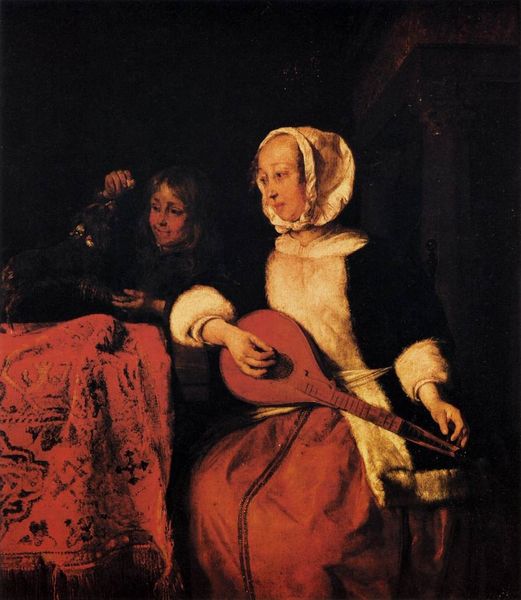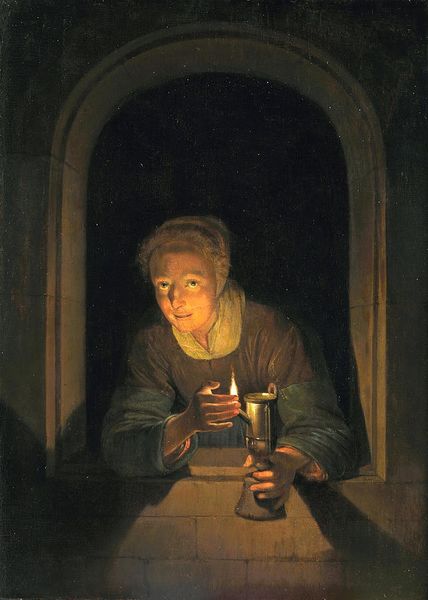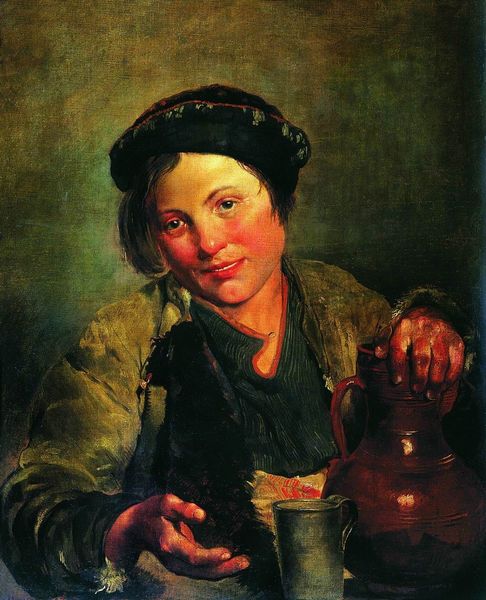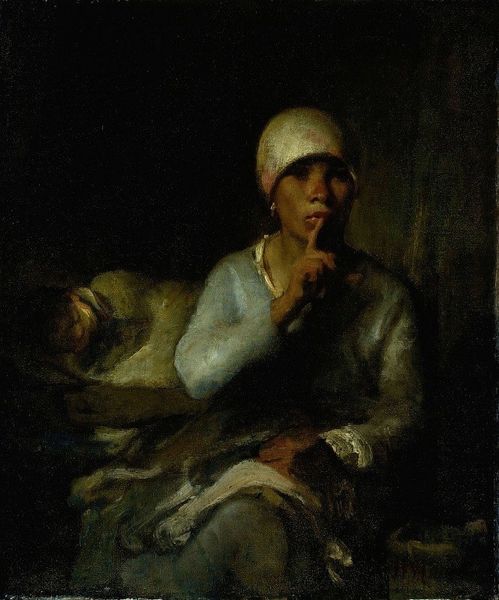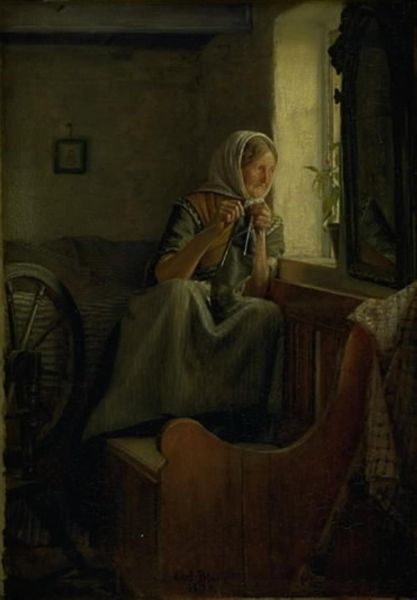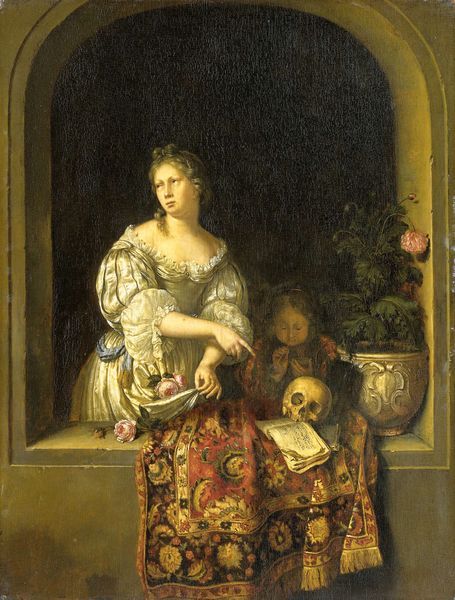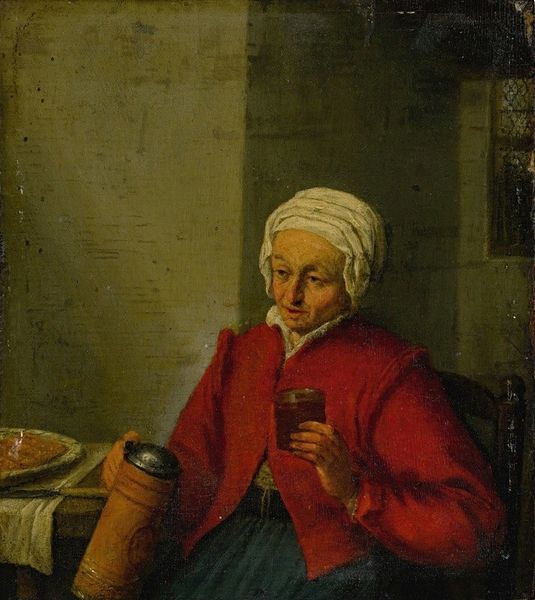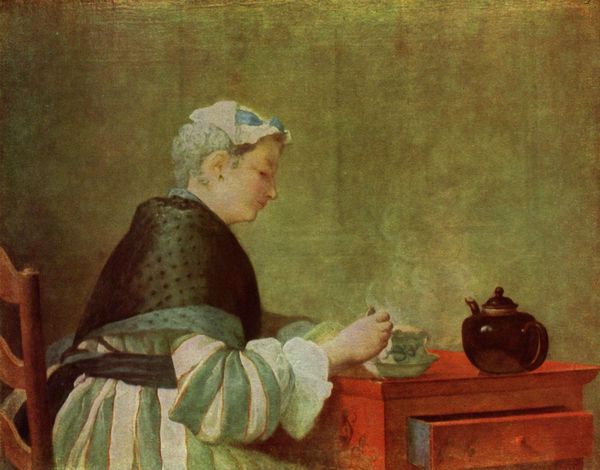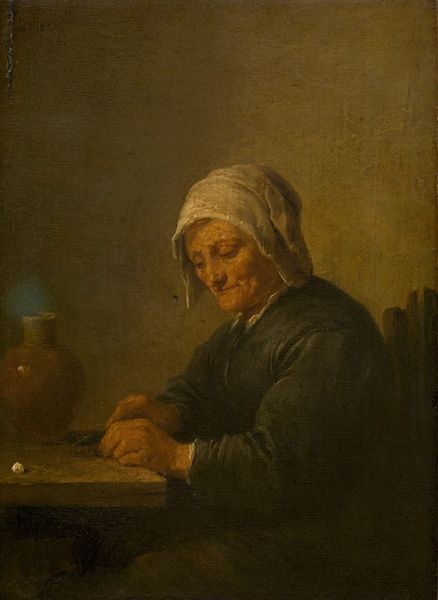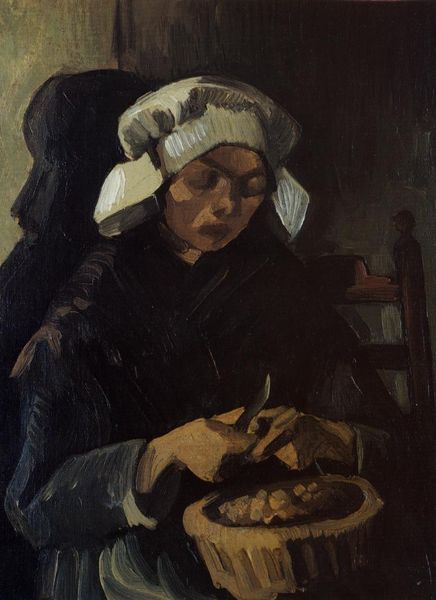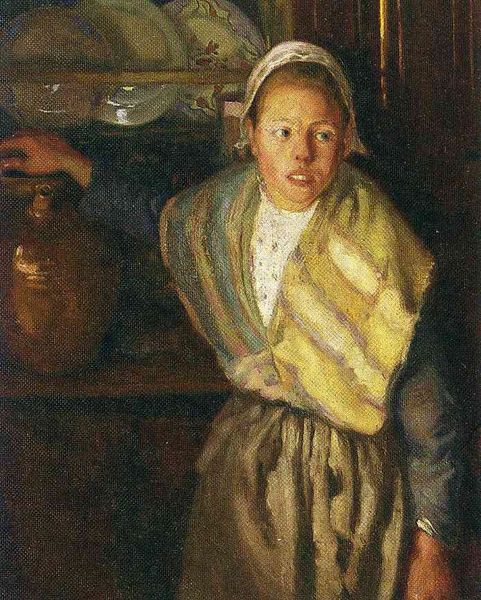
painting, oil-paint
#
portrait
#
baroque
#
dutch-golden-age
#
painting
#
oil-paint
#
oil painting
#
genre-painting
#
realism
Dimensions: 28 x 27 cm
Copyright: Public domain
Curator: Let's consider Gabriel Metsu's "The Tippler," painted in 1657. It's currently held here at the Louvre. A deceptively simple genre scene, isn't it? Editor: Immediately, I'm drawn to the warmth—not just of the colors, but of the moment. There’s a comfortable intimacy. She looks content, and perhaps just a little mischievous, ready for a glass of wine! Curator: Absolutely. Metsu was a master of portraying everyday life in 17th-century Holland, tapping into that fascination with realism that defines the Dutch Golden Age. Think about the burgeoning merchant class—they wanted to see themselves reflected in art. Not just in portraits, but in scenes of daily activity. Editor: It feels less staged than some other works from the period, less like a moral lesson and more like a stolen glimpse. It's so skillfully observed. The light catches the white linen of her cap and collar, contrasting with the dark interior… she's got the whole relaxed atmosphere nailed down! Curator: Genre paintings such as this often encoded subtle moral messages – sometimes a celebration of domestic life, other times a gentle nudge at its potential excesses. Wine drinking, tobacco – all represented choices with consequences. Consider, for instance, the fact that during that era, there was this rapid expansion of taverns in the urban centers. How did paintings affect urban reform? Editor: I see your point about the encoded meanings. Yet there is also that incredible skill in the ordinary. The chipped glaze on the ceramic jug, the folds in the tablecloth, a carelessly placed smoking pipe next to an already half-empty glass: Metsu clearly loved detail. I sense some celebration of these things over any moralizing. Or maybe both at once...a delicious combination. Curator: Perhaps! It underscores art's social function, the ways in which art can act both as a mirror and a guide. Metsu doesn't explicitly condemn; rather he offers us an opening for interpretation. It prompts a consideration of consumption within that cultural landscape. Editor: Well, I still think that this "Tippler" possesses something that extends beyond moral and urban commentary; there's a quiet humanity there. You get this feeling about the person herself – her life, thoughts, mood. Curator: True enough. It's precisely this ambiguous invitation to both reflection and interpretation that keeps me returning to this work. Editor: Indeed. Metsu allows us to reflect on everyday experiences, which, let’s be honest, have hardly lost their charm across the centuries.
Comments
No comments
Be the first to comment and join the conversation on the ultimate creative platform.
